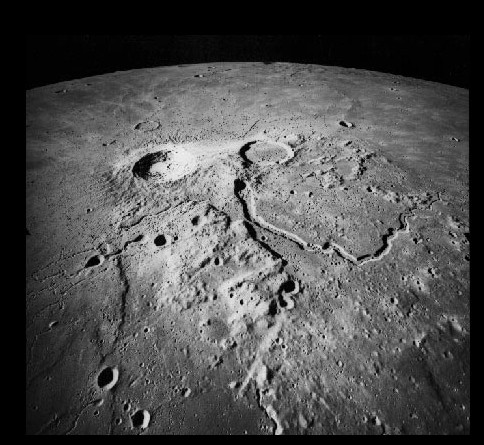Difference between revisions of "January 17, 2015"
(Created page with "__NOTOC__ == Originally published January 17, 2004 ---- ===COMMENTS?=== Register, and click on the <b>Discussion</b> tab at the top of the page. <hr> You can support LPOD whe...") |
|||
| (4 intermediate revisions by the same user not shown) | |||
| Line 1: | Line 1: | ||
__NOTOC__ | __NOTOC__ | ||
| − | == | + | =Wood's Spot= |
Originally published January 17, 2004 | Originally published January 17, 2004 | ||
| − | ---- | + | <table width="85%" border="0" align="center" cellpadding="6" cellspacing="2"> |
| − | === | + | <tr> |
| − | + | </tr> | |
| − | + | </table> | |
| − | + | <table width="85%" border="0" align="center" cellpadding="6" cellspacing="2"> | |
| − | < | + | <tr> |
| − | < | + | <td colspan="2"><div align="center"> |
| − | + | [[File:LPOD-Jan17-15.jpg|LPOD-Jan17-15.jpg]]</div></td> | |
| − | </center> | + | </tr> |
| − | </ | + | </table> |
| + | <table width="100%" border="0" cellpadding="8"> | ||
| + | <tr> | ||
| + | <td><div align="center" span class="main_sm"><p>Image Credit: NASA Apollo 15 Metric Camera Image 2610</p></div></td> | ||
| + | </tr> | ||
| + | </table> | ||
| + | <table class="story" border="0" bgcolor="#FFFFFF" width="90%" cellpadding="10" align="center"><tr><td> | ||
| + | <p class="story" align="center"><b>Wood's Spot</b></p> | ||
| + | <p class="story" align="left">One of the brightest craters on the Moon is the 40 km wide Aristarchus in northern Oceanus Procellarum. Nearby is the largest lunar rille, Schroeter's Valley. Both of these cut into the largest and strangest, but historically often overlooked mare island, the Aristarchus Plateau. Or the name I prefer, Wood's Spot, named after early 20th centrury astronomer R.W. Wood who discovered that the plateau is anomalously bright in the ultraviolet. In the visible the plateau is one of the lunar areas that sometimes seems faintly colored - once I saw it as a delicate mustardy green. Compare this oblique Apollo view with Tom Williamson's color [[wiki/January_3,_2004|webcam image]]. Note the dome in the bottom left-center of the image. | ||
| + | </p> | ||
| + | <!-- Links are defunct | ||
| + | </p> | ||
| + | <p class="story"><b>Related Links:</b><br> | ||
| + | [http://www.lpi.usra.edu/research/clemen/cmaris.html Aristarchus Region]<br> | ||
| + | [http://216.239.57.104/search?q=cache:pzCfZaE1k54J:www.unsgac.org/~jim/research/LPI_internship_report.doc+aristarchus+plateau+geology&hl=en&ie=UTF-8 Volcanic History of Oceanus Procellarum]<br> | ||
| + | </p> | ||
| + | --> | ||
| + | <p><b>Yesterday's LPOD:</b> [[January 16, 2015|The End of Lunar Studies]] </p> | ||
| + | <p><b>Tomorrow's LPOD:</b> [[January 18, 2015|LeGrand Moon]] </p> | ||
| + | </table> | ||
| + | <!-- start bottom --> | ||
| + | <table width="100%" border="0" cellspacing="2" cellpadding="4"> | ||
| + | <tr> | ||
| + | <td><hr></td> | ||
| + | </tr> | ||
| + | <tr> | ||
| + | <td><p align="center" class="main_titles"><b>Author & Editor:</b><br> | ||
| + | [mailto:tychocrater@yahoo.com Charles A. Wood]</p> | ||
| + | <!-- Cleanup of credits --> | ||
| + | <!-- Cleanup of credits --> | ||
| + | <!-- Cleanup of credits --> | ||
| + | <!-- Cleanup of credits --> | ||
| + | <!-- Cleanup of credits --> | ||
| + | <!-- Cleanup of credits --> | ||
| + | <!-- Cleanup of credits --> | ||
| + | </tr> | ||
| + | </table> | ||
| + | <!-- end cal --> | ||
| + | <div align="center"></div> | ||
| + | <p> </p> | ||
| + | {{wiki/ArticleFooter}} | ||
Latest revision as of 17:53, 1 February 2015
Wood's Spot
Originally published January 17, 2004
Image Credit: NASA Apollo 15 Metric Camera Image 2610 |
|
Wood's Spot One of the brightest craters on the Moon is the 40 km wide Aristarchus in northern Oceanus Procellarum. Nearby is the largest lunar rille, Schroeter's Valley. Both of these cut into the largest and strangest, but historically often overlooked mare island, the Aristarchus Plateau. Or the name I prefer, Wood's Spot, named after early 20th centrury astronomer R.W. Wood who discovered that the plateau is anomalously bright in the ultraviolet. In the visible the plateau is one of the lunar areas that sometimes seems faintly colored - once I saw it as a delicate mustardy green. Compare this oblique Apollo view with Tom Williamson's color webcam image. Note the dome in the bottom left-center of the image. Yesterday's LPOD: The End of Lunar Studies Tomorrow's LPOD: LeGrand Moon |
Author & Editor: |
COMMENTS?
Register, Log in, and join in the comments.




